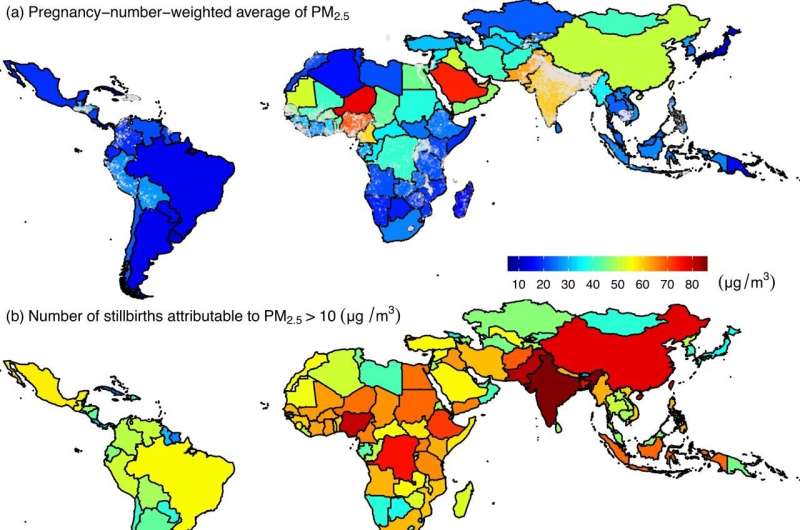December 1, 2022 report
Link found between air pollution and stillborn babies, especially in poor countries

A team of researchers affiliated with multiple institutions in China, working with one colleague in the U.S., has found a link between air pollution and rates of stillborn babies, most particularly in poorer countries. In their study published in the journal Nature Communications, the group cross-referenced data from the Department of Health Surveys run by USAID to learn more about this connection.
Stillborn babies die shortly before or during birth after making it almost all the way through the pregnancy process. Prior research has suggested that approximately 2 million stillborn pregnancies occur around the world each year, primarily in poor, undeveloped countries. And most stillborn births are due to abnormalities in the fetus, complications during labor, problems with the placenta or health problems with the mother. In this new effort, the researchers suspected that air pollution may also play a role, which could explain why so many more stillborn births happen in the third world.
To find connections between air quality and stillborn babies, the researchers cross-referenced data from the Department of Health surveys, comparing the numbers of stillborn babies by country with rates of air pollution, with a focus on fine particulate air pollution.
In their analysis, the researchers found a glaring pattern—countries with higher rates of stillborn babies had higher amounts of fine particulate air pollution. Leading the list was India, the country that has the highest average number of stillbirths—217,000 out of 25 million births each year. India was also near the top of the list of countries with the worst fine particulate air pollution—prior research has shown it to average 60.15 Ug/m3. The WHO has set a guideline of 5 Ug/m3 as a safe level of fine particulate air pollution.
The researchers suggest their work can be used in a positive way. Knowing that breathing polluted air can increase the risk of stillbirth, expectant mothers can take steps to reduce the risk. They can wear N95 masks when going outdoors, for example, and if possible, avoid going outside at all on particularly bad days and/or use air purifiers indoors.
More information: Tao Xue et al, Estimation of stillbirths attributable to ambient fine particles in 137 countries, Nature Communications (2022). DOI: 10.1038/s41467-022-34250-4
© 2022 Science X Network



















